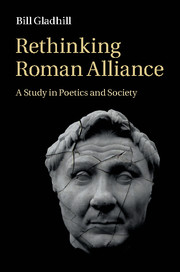Book contents
- Half title page
- Title page
- Copyright page
- Dedication
- Contents
- Book part
- Introduction
- Chapter 1 A prolegomenon to ritual alliance
- Chapter 2 Atomizing ritual alliance
- Chapter 3 Star wars inManilius’ Astronomica
- Chapter 4 Ritual alliance inVergil’s Aeneid
- Chapter 5 Ritual alliance in Lucan’s Bellum Civile
- Conclusion
- Bibliography
- Index
- References
Bibliography
Published online by Cambridge University Press: 05 June 2016
- Half title page
- Title page
- Copyright page
- Dedication
- Contents
- Book part
- Introduction
- Chapter 1 A prolegomenon to ritual alliance
- Chapter 2 Atomizing ritual alliance
- Chapter 3 Star wars inManilius’ Astronomica
- Chapter 4 Ritual alliance inVergil’s Aeneid
- Chapter 5 Ritual alliance in Lucan’s Bellum Civile
- Conclusion
- Bibliography
- Index
- References
Summary

- Type
- Chapter
- Information
- Rethinking Roman AllianceA Study in Poetics and Society, pp. 203 - 213Publisher: Cambridge University PressPrint publication year: 2016



